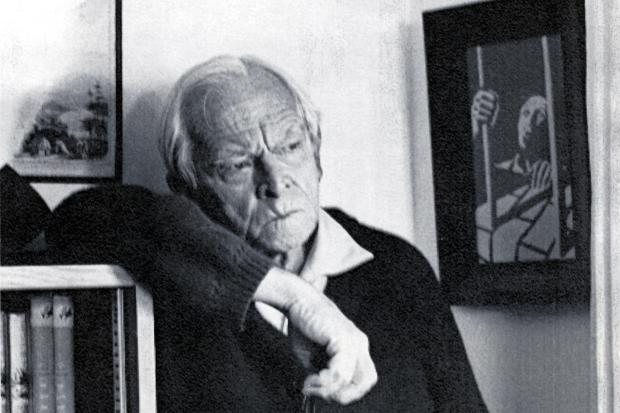Alan Paton marked with Google Doodle – why the South African author is being celebrated on his 115th birthday
The trailblazing writer and anti-apartheid activist fearlessly opposed racial segregation in his homeland during his career

ALAN Paton was a South African author and anti-apartheid activist who fearlessly opposed the racial segregation rife in his homeland throughout his career.
The trailblazing writer is being commemorated by a Google Doodle on what would have been his 115th birthday – here is what you need to know about him.
Who was Alan Paton?
Alan Paton was born in Natal on January 11, 1903 and earned a science degree before gaining a diploma in education and working as a teacher.
In 1935 he became principal of the Diepkloof Reformatory for young black African offenders, and spent his 14-year stint pursuing a series of compassionate, and consequently controversial, policies.
These included open dormitories, work permits and home visitation, with offenders rewarded for good, trustworthy behaviour by being allowed to work and even reside outside the prison.
After World War Two he toured correctional facilities around the world, visiting the likes of Scandinavia, England and the US.
During the trip he began work on his seminal first novel Cry, The Beloved Country, which was published in 1948 and laid bare the racial tensions in South Africa which would eventually become the apartheid system.
The moving book was critically acclaimed and spawned two movie adaptations, released in 1951 and 1995, and a musical version called Lost in the Stars.
Paton released several other books on race and politics in South Africa in the 1950s and 1960s, achieving great success.
He also fought against apartheid politically, co-founding the Liberal Party of South Africa in 1953, which railed against separatist legislation introduced by the ruling National Party.
The party was forced to disband in 1968 due to its members being both black and white.
While Paton advocated peaceful protest against apartheid, his opposition incurred the wrath of the ruling regime.
In 1960, the author had his passport confiscated for 10 years without explanation upon returning from a trip to New York.
He met his first wife, Dorrie Francis Lusted, when he was still at school – they were married in 1928 and had two sons before her death in 1967.
Paton married his second wife, Anne Hopkins, two years later, and they stayed together until he died from cancer in Durban in 1988, three years before the end of apartheid.
What is a Google Doodle?
In 1998, the search engine founders Larry and Sergey drew a stick figure behind the second 'o' of Google as a message to that they were out of office at the Burning Man festival and with that, Google Doodles were born.
The company decided that they should decorate the logo to mark cultural moments and it soon became clear that users really enjoyed the change to the Google homepage.
In that same year, a turkey was added to Thanksgiving and two pumpkins appeared as the 'o's for Halloween the following year.
Now, there is a full team of doodlers, illustrators, graphic designers, animators and classically trained artists who help create what you see on those days.
Among recent Doodles were ones commemorating German scientist Robert Koch, Jan Ingenhousz (who discovered photosynthesis) and the 50th anniversary of kids coding languages being introduced.
Earlier in the year, the search giant celebrated the 2017 Autumn Equinox , which marked the official ending of summer and the coming of autumn.





